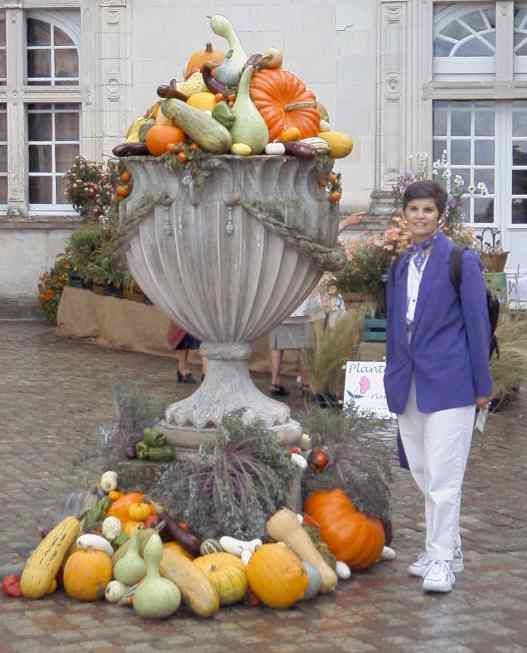
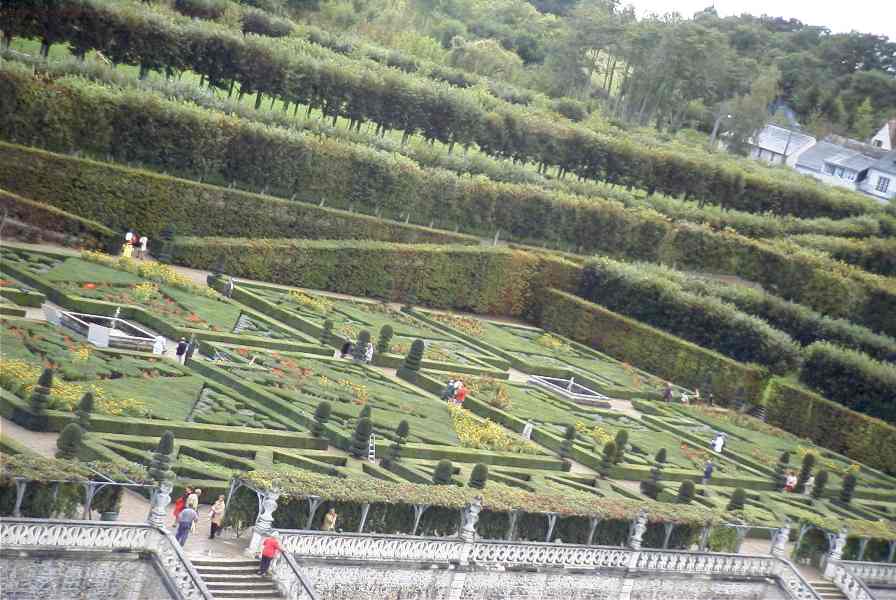 Here's the ornamental
garden, one of three major gardens at Villandry.
Please don't turn your monitor sideways.
Here's the ornamental
garden, one of three major gardens at Villandry.
Please don't turn your monitor sideways.
Given Pietrina's longstanding love for gardening, we were both looking forward to what could be the garden capital of the world, Villandry. We were not disappointed even though the visit started off with our trouble finding a parking lot in a Sunday afternoon downpour and then a wait in line. (OK, we only waited 5 minutes but by this time we were used to everything in the valley including chateaux, restaurants, and roads being empty). Turns out Villandry was having its fall celebration for the locals and giving away free flowers, etc. Note the picture of Pietrina below with a harvest centerpiece in the entrance plaza.

Or this one inside of a harvest ceramic:
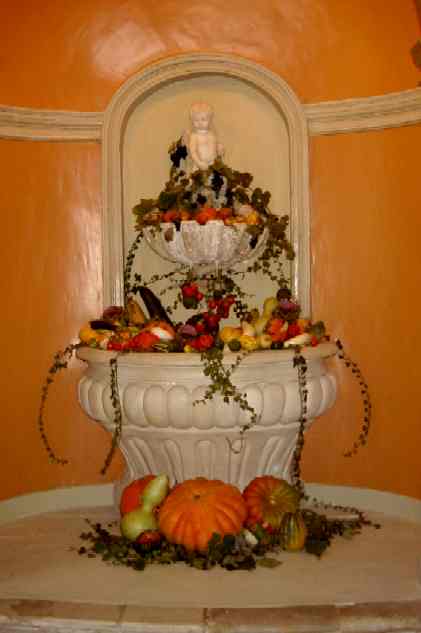
We started in the Chateau so we could work our way to the top terrace to better take pictures of the garden. This Château was one of the last great Renaissance chateaux built and shows much more French than Italian features. (This fashion later was dubbed "Henry IV style." It replaced an early fortress where in 1189 Henry II Plantagenet met Philippe-Auguste, a French king known in Paris for building an old wall. Today nothing remains of that fort except for the keep which you see integrated into the chateau wall below:
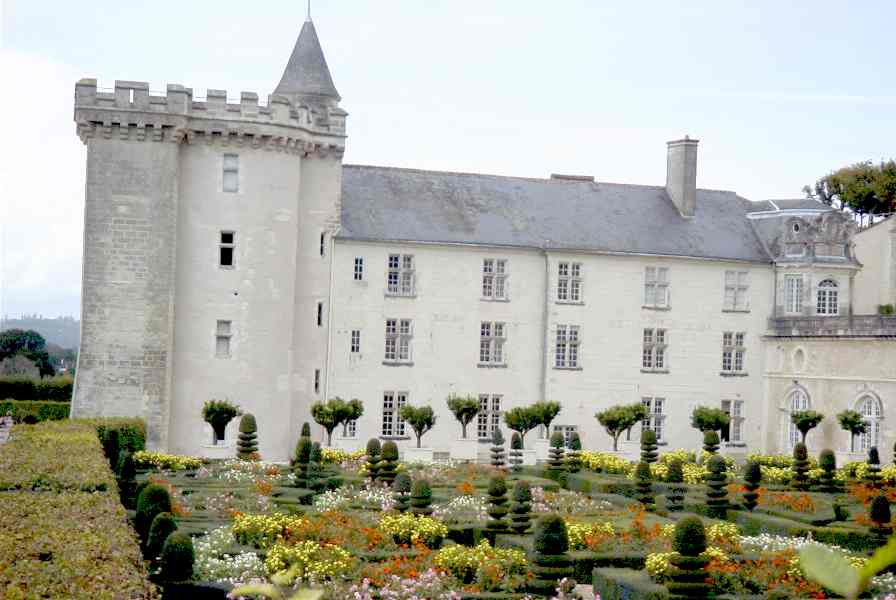
The castle we see today is a loving restoration of the building built by Jean le Breton who was both finance minister and architect/builder and designed many chateaux for the royalty and this one for himself around 1535. The home was bought by a Spanish physician, Joachim de Carvallo, in 1907 who had a passion for restoring the original architecture, rebuilding the gardens, and populating the home with Spanish art. Here's a sample of the Mudejar ceiling he brought from Toledo (and I don't mean Ohio.)
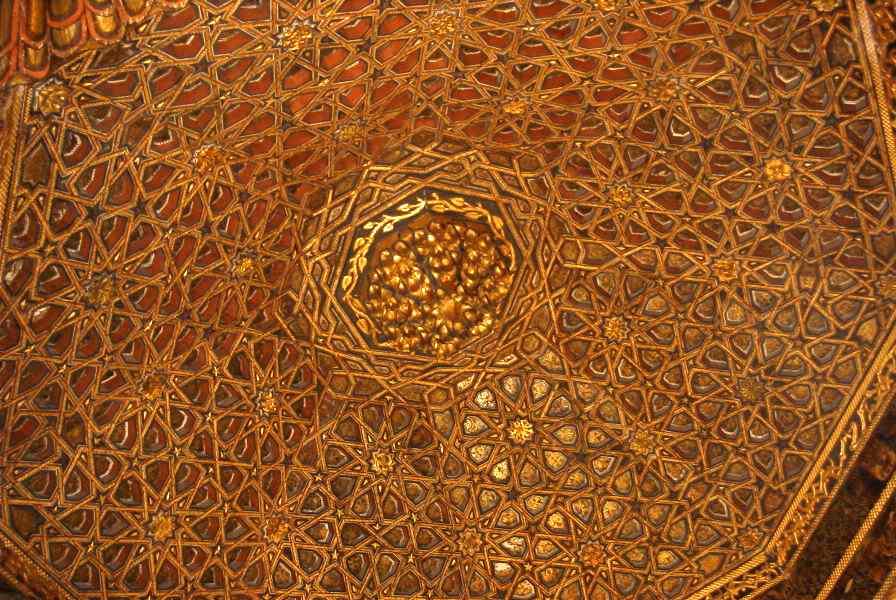
Carvallo pretty much squandered his wife's fortune on the restoration. Today the chateau is administered by his grandson.
There are three major gardens on different levels. The logical place to start is at the pond, on the top level, so the water can flow downward to navigate the other gardens and fill the ornamental moat.
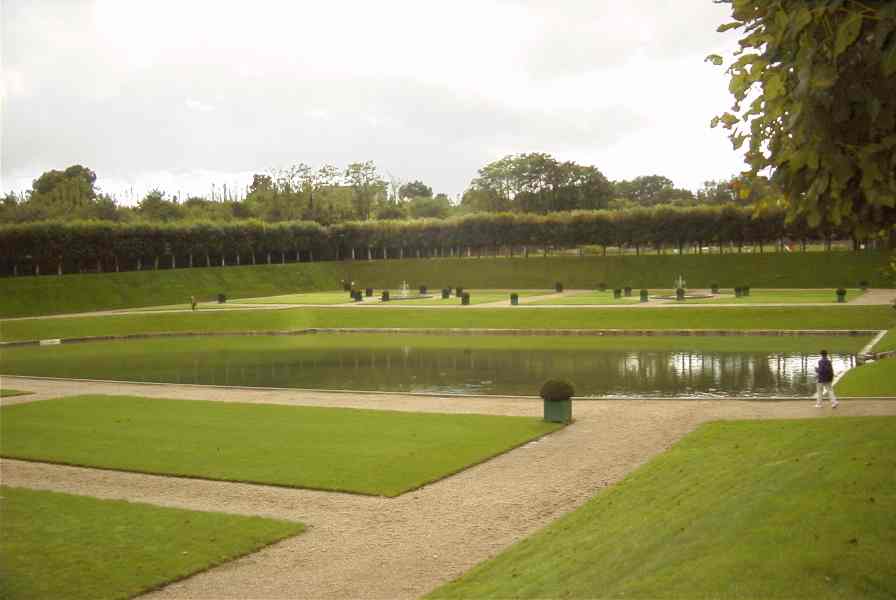
Next comes the ornamental garden which is what we typically think of as a French Renaissance garden. Here boxwood borders enclose flowers. The garden is heavily themed in each section to represent the various aspects of love (fickle with bushes shaped like horns, tender with heart shaped bushes, … you get the mushy idea). Other parts of the garden represent various crosses and music. Here's three pictures I hope don't take too long to load:

Here's one slightly closer:
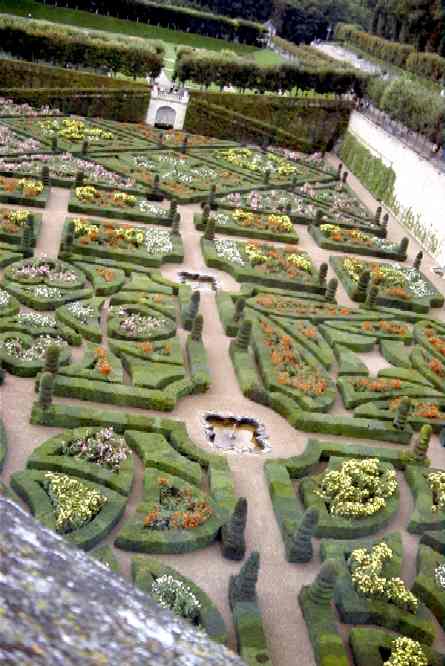
Or as close as we could get from the top of the castle:
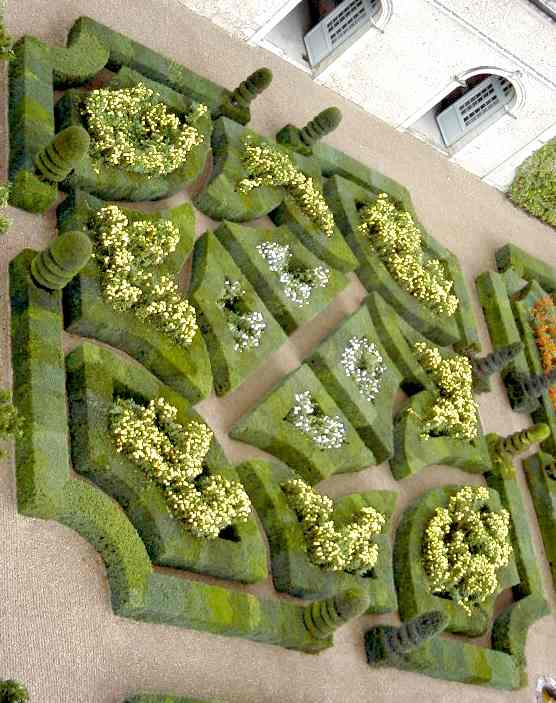
The final garden is the kitchen garden divided like the rest into nine equal squares each carefully planted with the colors of the vegetables and fruits in mind. Such gardens date back to the middle ages, especially in the abbeys, but this one shows heavy Italian influence. The decorated kitchen garden was always closest to the house so that the owners and gardeners could easily keep their eye on the exotic and sometimes fragile plants, often imported from the Americas.
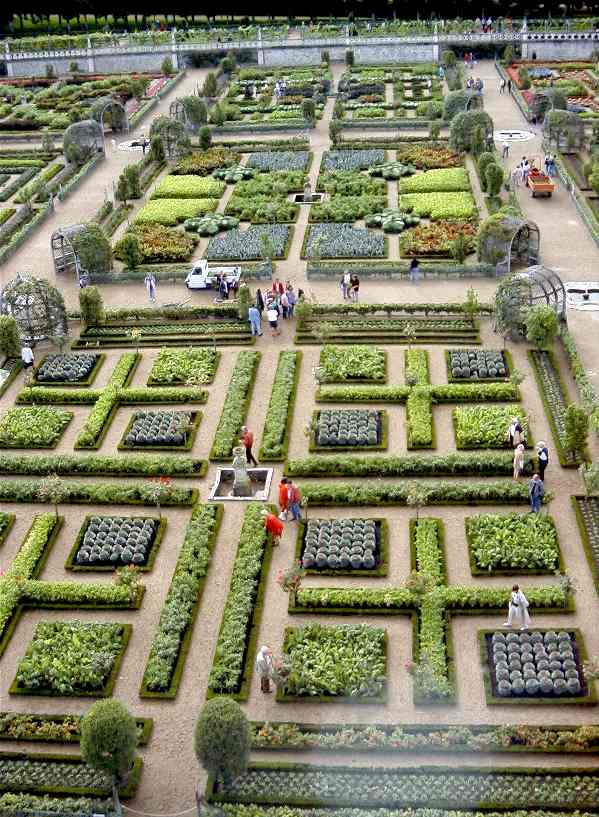
We stayed until closing and then ventured to the tiny village of Chenonceau to spend the night and be ready Monday morning for our last three Chateaux. Please join us in Chenonceau by clicking here.
Where do you want to go today? Here's a few choices:
